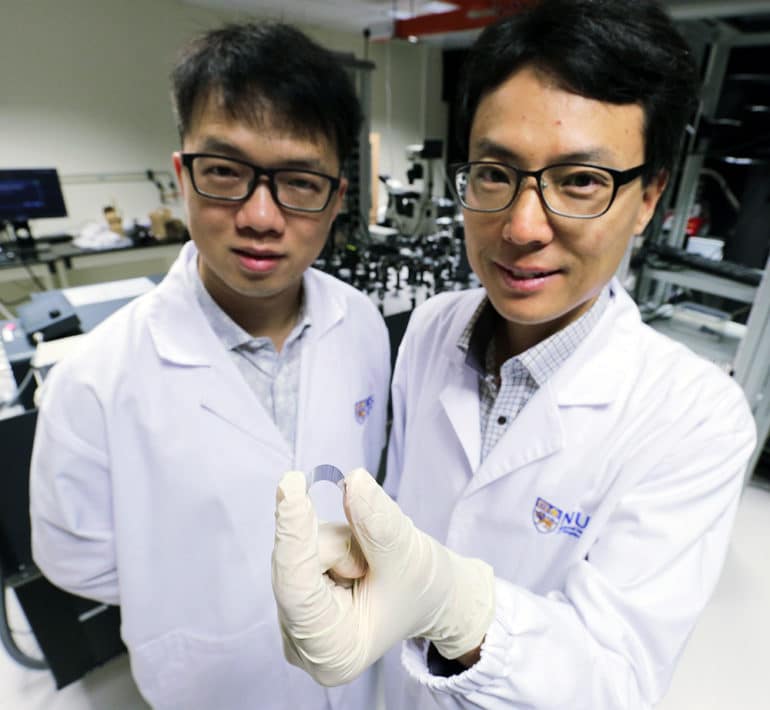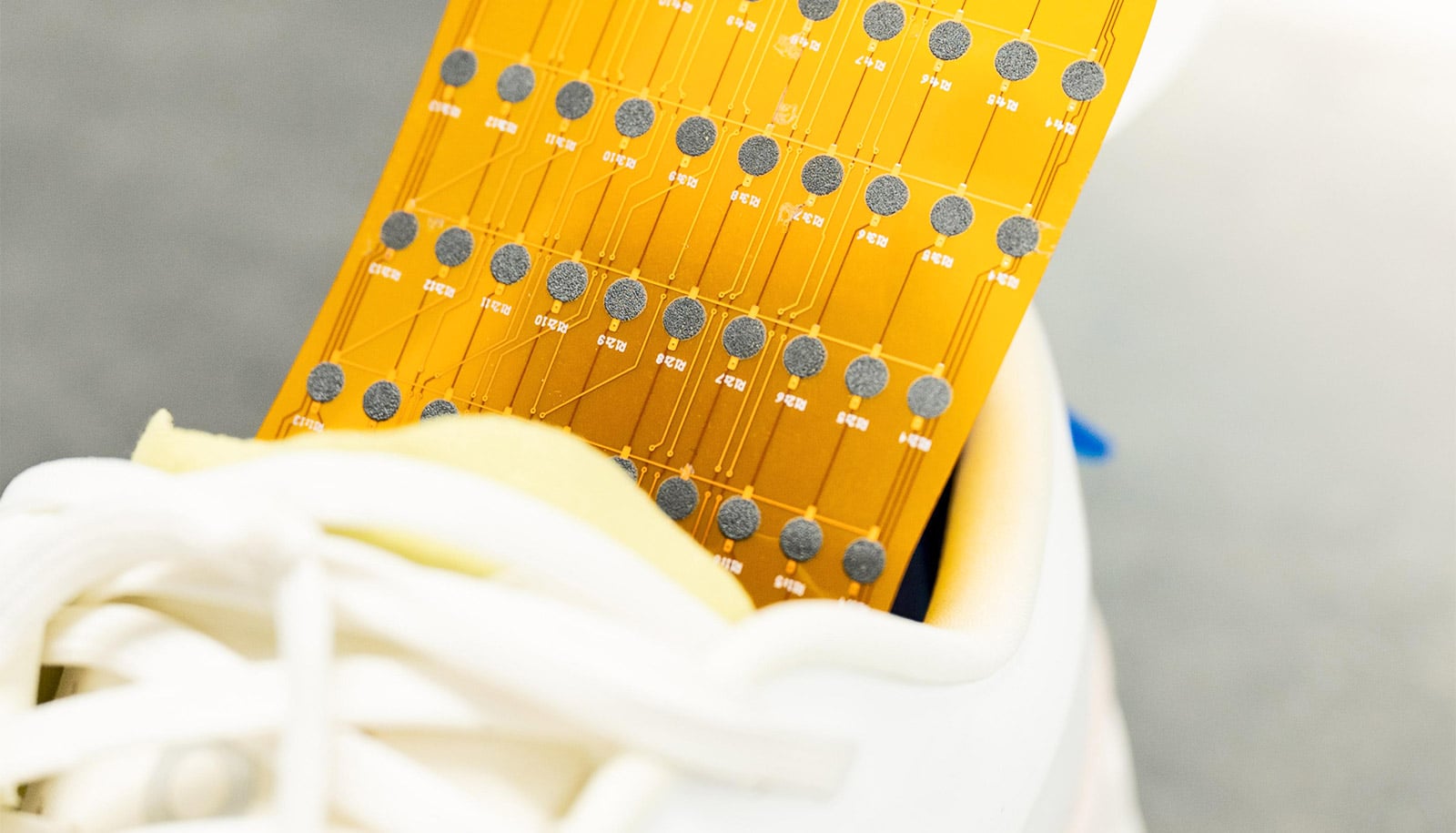Terahertz (THz) technology has attracted a lot of attention for its potential for non-invasive medical imaging, communication, and security surveillance. THz waves can pass through non-conducting materials such as clothes, paper, wood, and brick.
The problem is that current sources of THz waves are large, multi-component systems that are expensive, not very mobile, and difficult to operate.
“Our invention can contribute towards miniaturization of bulky THz systems.”
Researchers at the National University of Singapore may have a solution. They’ve developed low-power THz emitters that could be mass produced at a low cost. The emitters also can function on flexible surfaces, which could lead to wearable devices.
“Our invention is a big step forward in THz technology, and we believe that this will greatly accelerate its application in various fields,” says Yang Hyunsoo, an associate professor in electrical and computer engineering.
“For instance, in the area of safety surveillance, our invention can contribute towards miniaturization of bulky THz systems to be used in the detection of dangerous chemicals and explosives for protection against hostile threats.

“Affordable and high performance THz screening devices could also improve disease diagnosis and benefit patients. Furthermore, fabricating our device on a flexible surface also opens up many exciting possibilities for it to be incorporated into wearable devices,” explains Yang.
The technology could power portable handheld sensors for detecting explosives, wearable sensors that can detect chemical agents, compact devices for fast and accurate identification of defects in computing chips, as well as advanced, non-invasive imaging techniques that could detect tiny tumors.
Powered by a laser
Yang and colleagues developed the technology using metallic thin film heterostructures that are 12 nanometers thick. The novel radiation sources emit broadband THz waves with a higher power output than a standard 500-micrometer-thick rigid electro-optical crystal emitter. In addition, the novel emitters can be powered by a low-power laser, which lowers the operating cost substantially.
The research team also devised a novel, low-cost fabrication technique to produce the emitters. A large wafer-scale film can be deposited and subsequently diced to a large quantity of ready-to-use devices, thus making this production method commercially scalable.
Handheld terahertz cameras could replace MRI
They tested their device on flexible surfaces and found that its performance was not compromised despite being subjected to a large bending curvature.
Moving forward, the team plans to build a compact spectroscopy system using THz technology based on its advanced THz emitters. The researchers are also looking into enhancing THz emission for specific wavelengths, which will be beneficial for a wide range of THz-related studies and applications.
The research team has filed a patent for the invention and hopes to work with industry partners to further explore various applications of this novel technology. They published the findings of in the journal Advanced Materials. Collaborators include researchers from the Institute of Materials Research and Engineering under Singapore’s Agency for Science, Technology and Research, as well as Tongji University in China.
Source: National University of Singapore



